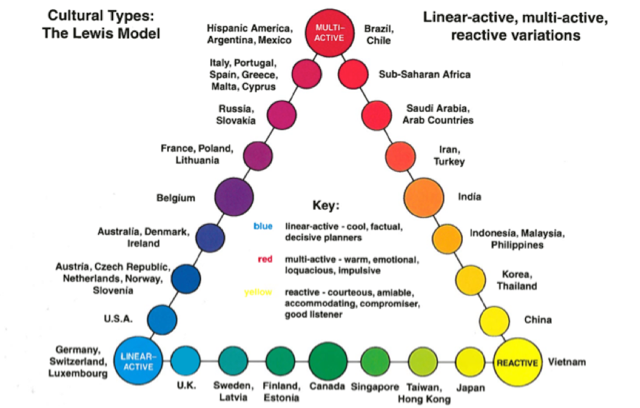Sign up for FlowVella
Sign up with FacebookAlready have an account? Sign in now
By registering you are agreeing to our
Terms of Service
Loading Flow

Richard D. Lewis
Richard D. Lewis (also mentioned in Culture 1 for the concept as such) makes a distinction between three main types of cultures, linear-active, multi-active and reactive.
Linear-active people tend to be task-oriented, highly organized planners, who complete action chains by doing one thing at a time, preferably in accordance with a linear agenda. Speech is for information and depends largely on facts and figures.
Multi-active people are loquacious, emotional, and impulsive and attach great importance to family, meetings, relationships, compassion, and human warmth. They like to do any many things at the same time and are poor followers of agenda. Speech is for opinions.
Reactive people – good listeners – rarely initiate action or discussion, preferring first to hear and establish the other’s position, then react to it and formulate their own opinion. Reactives listen before they leap. Speech is for creating harmony.
